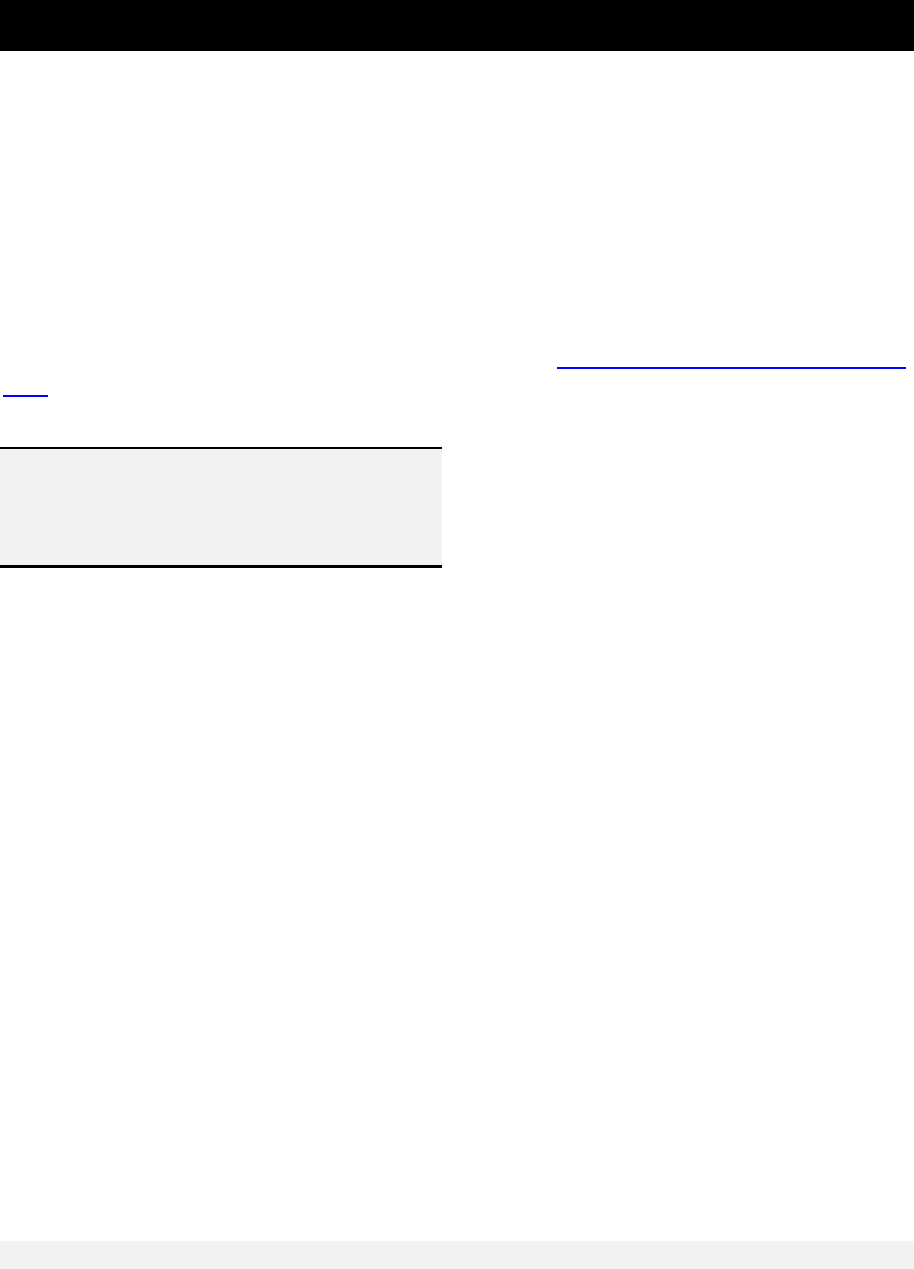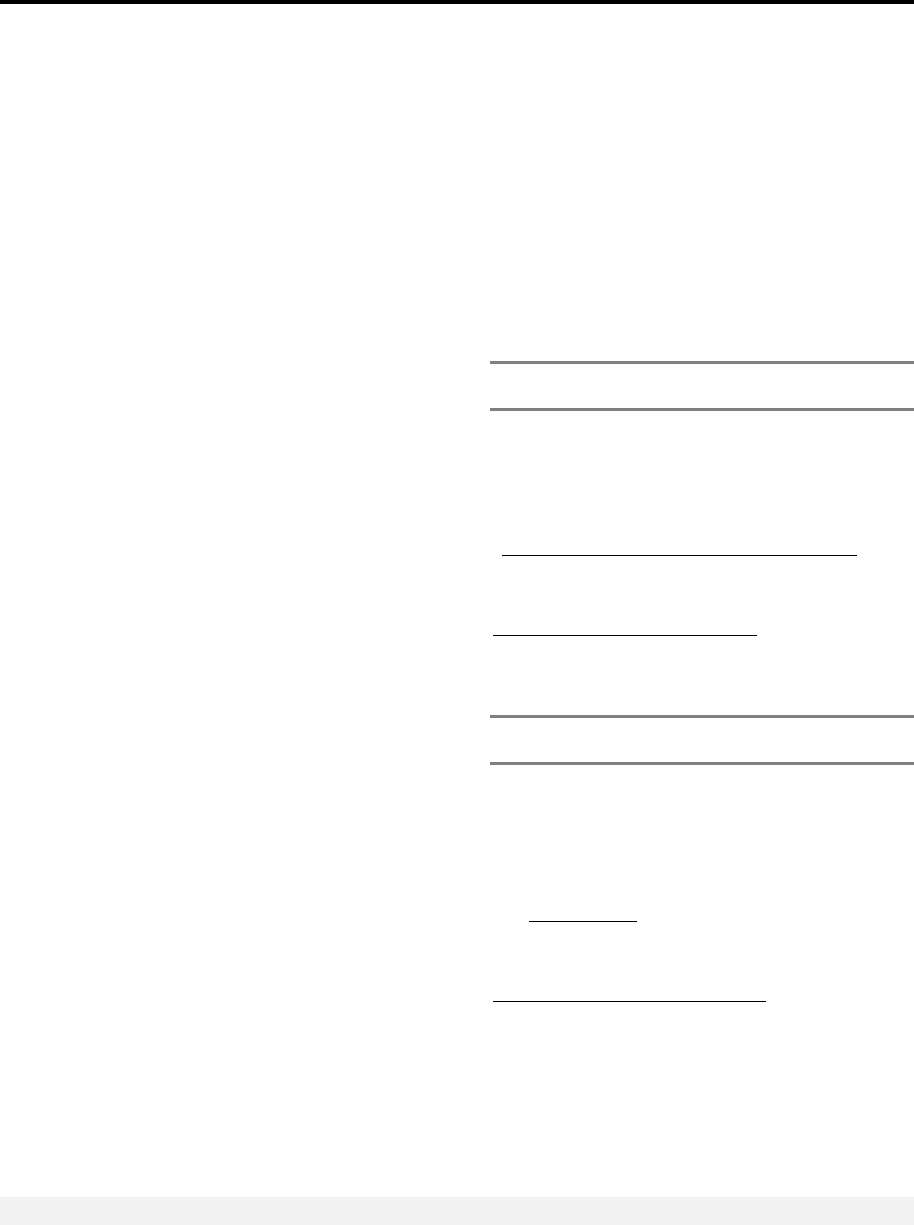
Instructions
Bankruptcy Forms for Individuals
U.S. Bankruptcy Court | December 2015 (Rev.
April 2022)

About this Booklet of Instructions ..................................................................................... 1
About the bankruptcy forms and filing bankruptcy .................................................................................................. 2
Understand the terms used in the forms ................................................................................................................. 2
Things to remember when filling out these forms ................................................................................................... 4
On what date was a debt incurred? ........................................................................................................................ 4
About the Process for Filing a Bankruptcy Case for Individuals ........................................................ 5
Notice Required by 11 U.S.C. § 342(b) for Individuals Filing for Bankruptcy (Form 2010) .............. 10
The types of bankruptcy that are available to individuals ..................................................................................... 10
Bankruptcy crimes have serious consequences................................................................................................... 13
Make sure the court has your mailing address ..................................................................................................... 13
Understand which services you could receive from credit counseling agencies .................................................. 13
Instructions for Selected Forms ...................................................................................... 15
Schedule A/B: Property (Official Form 106A/B) ............................................................................... 16
Schedule C: The Property You Claim as Exempt (Official Form 106C)........................................... 18
Schedule D: Creditors Who Have Claims Secured by Property (Official Form 106D) ..................... 19
Schedule E/F: Creditors Who Have Unsecured Claims (Official Form 106E/F) .............................. 22
Schedule G: Executory Contracts and Unexpired Leases (Official Form 106G) ............................. 26
Schedule H: Your Codebtors (Official Form 106H) ......................................................................... 27
Schedule I: Your Income (Official Form 106I) ................................................................................. 28
Schedule J: Your Expenses (Official Form 106J) ............................................................................ 30
Summary of Your Assets and Liabilities and Certain Statistical Information (Official Form
106Sum) .......................................................................................................................................... 31
Statement of Financial Affairs for Individuals Filing for Bankruptcy (Official Form 107) .................. 32
Chapter 7 Statement of Your Current Monthly Income and Means Test Calculation (Official
Forms 122A–1, 122A-1Supp, and 122A–2) .................................................................................... 33
Chapter 11 Statement of Your Current Monthly Income (Official Form 122B) ................................. 35
Chapter 13 Statement of Your Current Monthly Income, Calculation of Commitment Period
and Chapter 13 Calculation of Your Disposable Income (Official Forms 122C–1 and 122C–2) ...... 36
Statement of Intention for Individuals Filing Under Chapter 7 (Official Form 108) ........................... 38
Application for Individuals to Pay the Filing Fee in Installments (Official Form 103A) ..................... 40
Application to Have the Chapter 7 Filing Fee Waived (Official Form 103B) .................................... 41
For Individual Chapter 11 Cases: List of Creditors Who Have the 20 Largest Unsecured
Claims Against You and Are Not Insiders (Official Form 104) ......................................................... 38
Glossary ................................................................................................................... 40
Definitions of Some Terms Used in the Forms for Individuals Filing for Bankruptcy ....................... 41

About this Booklet of Instructions page 1
About this Booklet of Instructions
This booklet provides instructions for
completing selected forms that individuals
filing for bankruptcy must submit to the U.S.
Bankruptcy Court. You can download all of the
required forms without charge from:
http://www.uscourts.gov/FormsAndFees/Forms/Bank
ruptcyForms.aspx.
The instructions are designed to accompany the
forms and are intended to help you understand
what information is required to properly file.
You are responsible for properly completing the
forms. These instructions are not intended to
provide, and should not be understood to
provide, legal advice. They are not designed to
fully explain, or to be relied upon in
interpreting, the law.
Completing the forms is only a part of the
bankruptcy process. You are strongly
encouraged to hire a qualified attorney not only
to help you complete the forms but also to give
you general advice about bankruptcy and to
represent you in your bankruptcy case. If you
cannot afford to pay an attorney, you might
qualify for free legal services if they are
provided in your area. Contact your state or
local bar association for help in obtaining free
legal services or in hiring an attorney.
Note: It is extremely difficult to succeed in a
chapter 11, 12, or 13 case without an
attorney.
If an attorney represents you, you must provide
information so the attorney can prepare your
forms. Once the attorney prepares the forms,
you must make sure that the forms are accurate
and complete. These instructions may help you
perform those tasks. If you are filing for
bankruptcy without the help of an attorney, this
booklet tells you which forms must be filed and
provides information about them.
You should carefully read this booklet and keep
it with your records. Review the individual
forms as you read the instructions for each.
Although bankruptcy petition preparers can
help you type the bankruptcy forms, they cannot
tell you how to complete the forms, they cannot
file the documents for you, and they cannot give
you legal advice. Court employees cannot give
you legal advice, either.

About this Booklet of Instructions page 2
Read These Important Warnings
Because bankruptcy can have serious long-term financial and legal consequences, including
loss of your property, you should hire an attorney and carefully consider all of your options
before you file. Only an attorney can give you legal advice about what can happen as a result
of filing for bankruptcy and what your options are. If you do file for bankruptcy, an attorney
can help you fill out the forms properly and protect you, your family, your home, and your
possessions.
Although the law allows you to represent yourself in bankruptcy court, you should understand
that many people find it difficult to represent themselves successfully. The rules are technical,
and a mistake or inaction may harm you. If you file without an attorney, you are still
responsible for knowing and following all of the legal requirements.
You should not file for bankruptcy if you are not eligible to file or if you do not intend to file
the necessary documents.
Bankruptcy fraud is a serious crime; you could be fined and imprisoned if you commit fraud in
your bankruptcy case. Making a false statement, concealing property, or obtaining money or
property by fraud in connection with a bankruptcy case can result in fines up to $250,000, or
imprisonment for up to 20 years, or both. 18 U.S.C. §§ 152, 1341, 1519, and 3571.
About the bankruptcy forms and
filing bankruptcy
Use the forms that are numbered in the 100
series to file bankruptcy for individuals or
married couples. Use the forms that are
numbered in the 200 series if you are preparing
a bankruptcy on behalf of a nonindividual, such
as a corporation, partnership, or limited liability
company (LLC). Sole proprietors must use the
forms that are numbered in the 100 series.
When a bankruptcy is filed, the U.S.
Bankruptcy Court opens a case. It is important
that the answers to the questions on the forms
be complete and accurate so that the case
proceeds smoothly. A person filing bankruptcy
who gives false information could be charged
with a federal crime or could lose all the
benefits of filing for bankruptcy.
You should understand that filing a bankruptcy
case is not private. Anyone has a right to see
your bankruptcy forms after you file them,
unless the court orders otherwise under
11 U.S.C. § 107. Certain information in court
filings, however, must be protected from public
disclosure under Bankruptcy Rule 9037.
Understand the terms used in the
forms
The forms for individuals use you and Debtor 1

About this Booklet of Instructions page 3
to refer to a debtor filing alone. A married
couple may file a bankruptcy case together—
called a joint case—and in joint cases, these
forms use you to ask for information from both
debtors.

About this Booklet of Instructions page 4
For example, if a form asks, “Do you own a
car?” the answer would be yes if either debtor
owns a car. When information is needed about
the spouses separately, the forms use Debtor 1
and Debtor 2 to distinguish between them. In
joint cases, one of the spouses must report
information as Debtor 1 and the other as
Debtor 2. The same person must be Debtor 1 in
all of the forms.
To understand other terms used in the forms and
the instructions, see the Glossary at the end of
this booklet.
Things to remember when filling
out these forms
Do not file these instructions with the
bankruptcy forms that you file with the
court.
Be as complete and accurate as possible.
If more space is needed, attach a separate
sheet to the form. On the top of any
additional pages, write your name and case
number (if known). Also identify the form
and line number to which the additional
information applies.
If two married people are filing together,
both are equally responsible for supplying
correct information.
Do not list a minor child’s full name.
Instead, fill in only the child’s initials and
the full name and address of the child’s
parent or guardian. For example, write A.B.,
a minor child (John Doe, parent, 123 Main
St., City, State). 11 U.S.C. § 112;
Bankruptcy Rule 1007(m) and 9037.
For your records, be sure to keep a copy of
your bankruptcy documents and all
attachments that you file.
On what date was a debt incurred?
When a debt was incurred on a single date, fill
in the actual date that the debt was incurred.
When a debt was incurred on multiple dates, fill
in the range of dates. For example, if the debt is
from a credit card, fill in the month and year of
the first and last transaction.

About the Process for Filing a Bankruptcy Case for Individuals page 5
About the Process for Filing a Bankruptcy Case for
Individuals
Before you file your bankruptcy case
Before you file for bankruptcy, you must do
several things:
Receive a briefing about credit counseling from
an approved agency
within 180 days before
you file. (If you and your spouse are filing
together, each of you must receive a briefing
before you file. Failure to do so may result in
the dismissal of your case.) You may have a
briefing about credit counseling one-on-one
or in a group, by telephone, or by internet.
For a list of approved providers, go to:
https://www.justice.gov/ust/list-credit-
counseling-agencies-approved-pursuant-11-
usc-111
In Alabama and North Carolina, go to:
https://www.uscourts.gov/services-
forms/bankruptcy/credit-counseling-and-
debtor-education-courses.
After you finish the briefing, you will receive a
certificate that you will need to file in your
bankruptcy case.
Find out in which bankruptcy court you must
file your bankruptcy case
. It is important that
you file in the correct district within your
state. To find out which district you are in, go
to:
http://www.uscourts.gov/courtlinks
Check the local court’s website for any
specific local requirements that you might
have to meet. Go to:
http://www.uscourts.gov/courtlinks
Find out which chapters of the Bankruptcy
Code you are eligible for. For descriptions of
each chapter, review the information
contained in the notice, Notice Required by
11 U.S.C. § 342(b) for Individuals Filing for
Bankruptcy (Form B2010), which is included
in this booklet.

About the Process for Filing a Bankruptcy Case for Individuals page 6
When you file your bankruptcy case
There are several forms and documents that you
must give the court at the time you file.
Additional forms and documents must be filed no
later than 14 days after you file your bankruptcy
case, although they may be filed at the same time
you file your case.
You must file the forms listed below on the date
you open your bankruptcy case. For copies of the
forms listed here, go to
https://www.uscourts.gov/forms/bankruptcy-forms.
(The list continues on the next page.):
Voluntary Petition for Individuals Filing for
Bankruptcy (Official Form 101). This form
opens the case. Directions for filling it out are
included in the form itself.
Statement About Your Social Security
Numbers (Official Form 121). This form gives
the court your full Social Security number or
federal Individual Taxpayer Identification
number. To protect your privacy, the court
will make only the last four digits of your
number known to the general public.
However, the court will make your full
number available to your creditors, the U.S.
trustee or bankruptcy administrator, and the
trustee assigned to your case. This form has no
separate instructions.
Your filing fee. If you cannot pay the entire
filing fee, you must also include:
Application for Individuals to Pay the
Filing Fee in Installments (Official Form
103A), or
Application to Have the Chapter 7 Filing
Fee Waived (Official Form 103B). Use
this form only if you are filing under
chapter 7 and you meet the criteria to have
the chapter 7 filing fee waived.
A list of names and addresses of all of your
creditors, formatted as a mailing list according
to instructions from the bankruptcy court in
which you file. (Your court may call this a
creditor matrix or mailing matrix.)
Your credit counseling certificate from an
approved credit counseling agency. (See
Before you file your bankruptcy case, above).
If you have received the briefing about credit
counseling but have not yet received the
certificate, file it no later than 14 days after
you file for bankruptcy. If you have not
already received the briefing and believe you
are entitled to a temporary waiver from
receiving it or that you are not required to
receive the briefing, see line 15 of the
Voluntary Petition for Individuals Filing for
Bankruptcy (Official Form 101).
For Individual Chapter 11 Cases: List of
Creditors Who Have the 20 Largest
Unsecured Claims Against You and Are Not
Insiders (Official Form 104). Fill out this form
only if you file under chapter 11.
Initial Statement About an Eviction Judgment
Against You (Official Form 101A) and
Statement About Payment of an Eviction
Judgment Against You (Official Form 101B).
Use Form 101A if your landlord has an
eviction judgment against you. If you
complete Form 101A and you want to stay in
your residence for the first 30 days after you
file, you must indicate that on the form. Use
Form 101B if you have completed Form 101A
and you want to stay in your rented residence
form more than 30 days after you file for
bankruptcy.
Bankruptcy Petition Preparer’s Notice,
Declaration, and Signature (Official Form 119)
and Disclosure of Compensation of Bankruptcy
Petition Preparer (Form 2800). Use these forms
if a bankruptcy petition preparer typed your

About the Process for Filing a Bankruptcy Case for Individuals page 7
forms.
When you file your bankruptcy case or within 14 days after you file
You must file the forms listed below either when you file your bankruptcy case or within 14 days after
you file your Voluntary Petition for Individuals Filing for Bankruptcy (Official Form 101). If you do
not do so, your case may be dismissed. Although it is possible to open your case by submitting only
the documents that are listed under When you file your bankruptcy case, you should file the entire set
of forms at one time to help your case proceed smoothly.
Although some forms may ask you similar questions, you must fill out all of the forms completely to
protect your legal rights.
The list below shows the forms that all individuals must file as well as the forms that are specific to
each chapter. For copies of the official forms listed here, go to
https://www.uscourts.gov/forms/bankruptcy-
forms.
All individuals who file for bankruptcy
must file these forms and the forms for the
specific chapter:
Schedules of Assets and Liabilities (Official
Form 106) which includes these forms:
Schedule A/B: Property (Official
Form 106A/B)
Schedule C: The Property You Claim as
Exempt (Official Form 106C)
Schedule D: Creditors Who Have Claims
Secured by Your Property (Official Form
106D)
Schedule E/F: Creditors Who Have
Unsecured Claims (Official Form 106E/F)
Schedule G: Executory Contracts and
Unexpired Leases (Official Form 106G)
Schedule H: Your Codebtors (Official
Form 106H)
Schedule I: Your Income (Official
Form 106I)
Schedule J: Your Expenses (Official
Form 106J)
Summary of Your Assets and Liabilities
and Certain Statistical Information
(Official Form 106Sum). This form gives
an overview of the totals on the schedules
Declaration About an Individual Debtor’s
Schedules (Official Form 106Dec)
Statement of Financial Affairs for Individuals
Filing for Bankruptcy (Official Form 107)
Disclosure of Compensation to Debtor’s
Attorney Unless local rules provide
otherwise, Director’s Form 2030 may be used.
Credit counseling certificate that you received
from an approved credit counseling agency
Copies of all payment advices (pay stubs) or
other evidence of payment that you received
within 60 days before you filed your bankruptcy
case. Some local courts may require that you
submit these documents to the trustee assigned
to your case rather than filing them with the

About the Process for Filing a Bankruptcy Case for Individuals page 8
court. Check the local court’s website to find
out if local requirements apply. Go to
http://www.uscourts.gov/courtlinks.

About the Process for Filing a Bankruptcy Case for Individuals page 9
If you file under chapter 7, you must also file:
Statement of Intention for Individuals Filing
Under Chapter 7 (Official Form 108)
Chapter 7 Statement of Your Current Monthly
Income (Official Form 122A-1)
If necessary, Chapter 7 Means Test
Calculation (Official Form 122A-2)
If necessary, Statement of Exemption from
Presumption of Abuse Under § 707(b)(2)
(Official Form 122A-1Supp)
If you file under chapter 11, you must also file:
Chapter 11 Statement of Your Current
Monthly Income (Official Form 122-B)
If you file under chapter 11 and are a small
business debtor (that is, if you are self-employed
and your debts are less than $3,024,725*), within
7 days after you file your bankruptcy forms to
open your case, you must also file your most
recent:
Balance sheet
Statement of operations
Cash-flow statement
Federal income tax return
If you do not have these documents, you must
file a statement made under penalty of perjury
that you have not prepared either a balance sheet,
statement of operations, or cash-flow statement
or you have not filed a federal tax return.
If you file under chapter 11, you must file
additional documents beyond the scope of these
instructions. You should consult your attorney.
* Subject to adjustment on 4/01/25, and every 3 years
after that for cases begun on or after the date of
adjustment.
If you file under chapter 12, you must also file:
Chapter 12 Plan (within 90 days after you file
your bankruptcy forms to open your case)
If you file under chapter 13, you must also file:
Chapter 13 Statement of Your Current Monthly
Income and Calculation of Commitment Period
(Official Form 122C-1)
If necessary, Chapter 13 Calculation of Your
Disposable Income (Official Form 122C-2)
Chapter 13 Plan (Official Form 113, if in
effect). If Official Form 113 is not effective
when you file, many bankruptcy courts
require you to use a local form plan. Check
the local court’s website for any specific form
that you might have to use. Go to
http://www.uscourts.gov/courtlinks.)

Notice Required by 11 U.S.C. U.S.C. § 342(b) for Individuals Filing for Bankruptcy (Form 2010) page 10
Notice Required by 11 U.S.C. § 342(b) for
Individuals Filing for Bankruptcy
(Form 2010)
This notice is for you if:
n You are an individual filing for
bankruptcy
, and
n Your debts are primarily consumer
debts. Consumer debts are defined in
11 U.S.C. § 101(8) as “incurred by an
individual primarily for a personal,
family, or household purpose.”
The types of bankruptcy that are
available to individuals
Individuals who meet the qualifications may file
under one of four different chapters of the
Bankruptcy Code:
Chapter 7 — Liquidation
Chapter 11 — Reorganization
Chapter 12 — Voluntary repayment plan
for family farmers or
fishermen
Chapter 13 — Voluntary repayment plan
for individuals with regular
income
You should have an attorney review your
decision to file for bankruptcy and the choice of
chapter.
Chapter 7: Liquidation
$245 filing fee
$78 administrative fee
+ $15 trustee surcharge
$338 total fee
Chapter 7 is for individuals who have financial
difficulty preventing them from paying their
debts and who are willing to allow their non-
exempt property to be used to pay their
creditors. The primary purpose of filing under
chapter 7 is to have your debts discharged. The
bankruptcy discharge relieves you after
bankruptcy from having to pay many of your
pre-bankruptcy debts. Exceptions exist for
particular debts, and liens on property may still
be enforced after discharge. For example, a
creditor may have the right to foreclose a home
mortgage or repossess an automobile.
However, if the court finds that you have
committed certain kinds of improper conduct
described in the Bankruptcy Code, the court
may deny your discharge.
You should know that even if you file
chapter 7 and you receive a discharge, some
debts are not discharged under the law.
Therefore, you may still be responsible to pay:
most taxes;
most student loans;
domestic support and property settlement
obligations;

Notice Required by 11 U.S.C. U.S.C. § 342(b) for Individuals Filing for Bankruptcy (Form 2010) page 11
most fines, penalties, forfeitures, and
criminal restitution obligations; and
certain debts that are not listed in your
bankruptcy papers.
You may also be required to pay debts arising
from:
fraud or theft;
fraud or defalcation while acting in breach
of fiduciary capacity;
intentional injuries that you inflicted; and
death or personal injury caused by
operating a motor vehicle, vessel, or
aircraft while intoxicated from alcohol or
drugs.
If your debts are primarily consumer debts, the
court can dismiss your chapter 7 case if it finds
that you have enough income to repay
creditors a certain amount. You must file
Chapter 7 Statement of Your Current Monthly
Income (Official Form 122A–1) if you are an
individual filing for bankruptcy under
chapter 7. This form will determine your
current monthly income and compare whether
your income is more than the median income
that applies in your state.
If your income is not above the median for
your state, you will not have to complete the
other chapter 7 form, the Chapter 7 Means
Test Calculation (Official Form 122A–2).
If your income is above the median for your
state, you must file a second form —the
Chapter 7 Means Test Calculation (Official
Form 122A–2). The calculations on the form—
sometimes called the Means Test—deduct
from your income living expenses and
payments on certain debts to determine any
amount available to pay unsecured creditors. If
your income is more than the median income
for your state of residence and family size,
depending on the results of the Means Test, the
U.S. trustee, bankruptcy administrator, or
creditors can file a motion to dismiss your case
under § 707(b) of the Bankruptcy Code. If a
motion is filed, the court will decide if your
case should be dismissed. To avoid dismissal,
you may choose to proceed under another
chapter of the Bankruptcy Code.
If you are an individual filing for chapter 7
bankruptcy, the trustee may sell your property
to pay your debts, subject to your right to
exempt the property or a portion of the
proceeds from the sale of the property. The
property, and the proceeds from property that
your bankruptcy trustee sells or liquidates that
you are entitled to, is called exempt property.
Exemptions may enable you to keep your
home, a car, clothing, and household items or
to receive some of the proceeds if the property
is sold.
Exemptions are not automatic. To exempt
property, you must list it on Schedule C: The
Property You Claim as Exempt (Official Form
106C). If you do not list the property, the
trustee may sell it and pay all of the proceeds
to your creditors.
Chapter 11: Reorganization
$1,167 filing fee
+ $571 administrative fee
$1,738 total fee
Chapter 11 is often used for reorganizing a
business, but is also available to individuals.
The provisions of chapter 11 are too
complicated to summarize briefly.

Notice Required by 11 U.S.C. U.S.C. § 342(b) for Individuals Filing for Bankruptcy (Form 2010) page 12
Chapter 12: Repayment plan for family
farmers or fishermen
$200 filing fee
+ $78 administrative fee
$278 total fee
Similar to chapter 13, chapter 12 permits
family farmers and fishermen to repay their
debts over a period of time using future
earnings and to discharge some debts that are
not paid.
Chapter 13: Repayment plan for
individuals with regular
income
$235 filing fee
+ $78 administrative fee
$313 total fee
Chapter 13 is for individuals who have regular
income and would like to pay all or part of
their debts in installments over a period of time
and to discharge some debts that are not paid.
You are eligible for chapter 13 only if your
debts are not more than certain dollar amounts
set forth in 11 U.S.C. § 109.
Under chapter 13, you must file with the court
a plan to repay your creditors all or part of the
money that you owe them, usually using your
future earnings. If the court approves your
plan, the court will allow you to repay your
debts, as adjusted by the plan, within 3 years or
5 years, depending on your income and other
factors.
After you make all the payments under your
plan, many of your debts are discharged. The
debts that are not discharged and that you may
still be responsible to pay include:
domestic support obligations,
most student loans,
certain taxes,
debts for fraud or theft,
debts for fraud or defalcation while acting
in a fiduciary capacity,
most criminal fines and restitution
Read These Important Warnings
Because bankruptcy can have serious long-term financial and legal consequences, including loss of
your property, you should hire an attorney and carefully consider all of your options before you file.
Only an attorney can give you legal advice about what can happen as a result of filing for bankruptcy
and what your options are. If you do file for bankruptcy, an attorney can help you fill out the forms
properly and protect you, your family, your home, and your possessions.
Although the law allows you to represent yourself in bankruptcy court, you should understand that
many people find it difficult to represent themselves successfully. The rules are technical, and a
mistake or inaction may harm you. If you file without an attorney, you are still responsible for knowing
and following all of the legal requirements.
You should not file for bankruptcy if you are not eligible to file or if you do not intend to file the
necessary documents.
Bankruptcy fraud is a serious crime; you could be fined and imprisoned if you commit fraud in your
bankruptcy case.
Making a false statement, concealing property, or obtaining money or property by
fraud in connection with a bankruptcy case can result in fines up to $250,000, or imprisonment for up to
20 years, or both. 18 U.S.C. §§ 152, 1341, 1519, and 3571.

Notice Required by 11 U.S.C. U.S.C. § 342(b) for Individuals Filing for Bankruptcy (Form 2010) page 13
obligations,
certain debts that are not listed in your
bankruptcy papers,
certain debts for acts that caused death or
personal injury, and
certain long-term secured debts.
Bankruptcy crimes have serious
consequences
If you knowingly and fraudulently conceal
assets or make a false oath or statement
under penalty of perjury—either orally or
in writing—in connection with a
bankruptcy case, you may be fined,
imprisoned, or both.
All information you supply in connection
with a bankruptcy case is subject to
examination by the Attorney General acting
through the Office of the U.S. Trustee, the
Office of the U.S. Attorney, and other
offices and employees of the U.S.
Department of Justice.
Make sure the court has your
mailing address
The bankruptcy court sends notices to the
mailing address you list on Voluntary Petition
for Individuals Filing for Bankruptcy (Official
Form 101). To ensure that you receive
information about your case, Bankruptcy
Rule 4002 requires that you notify the court of
any changes in your address.
A married couple may file a bankruptcy case
together—called a joint case. If you file a joint
case and each spouse lists the same mailing
address on the bankruptcy petition, the
bankruptcy court generally will mail you and
your spouse one copy of each notice, unless
you file a statement with the court asking that
each spouse receive separate copies.
Understand which services you
could receive from credit
counseling agencies
The law generally requires that you receive a
credit counseling briefing from an approved
credit counseling agency. 11 U.S.C. § 109(h).
If you are filing a joint case, both spouses must
receive the briefing. With limited exceptions,
you must receive it within the 180 days
before
you file your bankruptcy petition. This briefing
is usually conducted by telephone or on the
Internet.
In addition, after filing a bankruptcy case, you
generally must complete a financial
management instructional course before you
can receive a discharge. If you are filing a joint
case, both spouses must complete the course.
You can obtain the list of agencies approved to
provide both the briefing and the instructional
course from: https://www.justice.gov/ust/list-
credit-counseling-agencies-approved-pursuant-11-
Warning: File Your Forms on Time
Section 521(a)(1) of the Bankruptcy Code
requires that you promptly file detailed information
about your creditors, assets, liabilities, income,
expenses and general financial condition. The
court may dismiss your bankruptcy case if you do
not file this information within the deadlines set by
the Bankruptcy Code, the Bankruptcy Rules, and
the local rules of the court.
For more information about the documents and
their deadlines, go to:
https://www.uscourts.gov/forms/bankruptcy-
forms.

Notice Required by 11 U.S.C. U.S.C. § 342(b) for Individuals Filing for Bankruptcy (Form 2010) page 14
usc-111.
In Alabama and North Carolina, go to:
https://www.uscourts.gov/services-
forms/bankruptcy/credit-counseling-and-
debtor-education-courses.
If you do not have access to a computer, the
clerk of the bankruptcy court may be able to
help you obtain the list.

Instructions for Selected Forms page 15
Instructions for Selected Forms

Schedule A/B: Property (Official Form 106A/B) page 16
Schedule A/B: Property (Official Form 106A/B)
Schedule A/B: Property (Official Form 106A/B)
lists property interests that are involved in a
bankruptcy case. All individuals filing for
bankruptcy must list everything they own or
have a legal or equitable interest in. Legal or
equitable interest is a broad term and includes
all kinds of property interests in both tangible
and intangible property, whether or not anyone
else has an interest in that property.
The information in this form is grouped by
category and includes several examples for
many items. Note that those examples are meant
to give you an idea of what to include in the
categories. They are not intended to be
complete lists of everything within that
category. Make sure you list everything you
own or have an interest in.
You must verify under penalty of perjury that
the information you provide is complete and
accurate. Making a false statement, concealing
property, or obtaining money or property by
fraud in connection with a bankruptcy case can
result in fines up to $250,000, or imprisonment
for up to 20 years, or both. 18 U.S.C. §§ 152,
1341, 1519, and 3571.
Understand the terms used in this form
Community property — Type of property
ownership available in certain states for
property owned by spouses and, in some
instances, legal equivalents of spouses.
Community property states and territories
include Arizona, California, Idaho, Louisiana,
Nevada, New Mexico, Puerto Rico, Texas,
Washington, and Wisconsin.
Current value — In this form, report the current
value of the property that you own in each
category. Current value is sometimes called fair
market value and, for this form, is the fair
market value as of the date of the filing of the
petition. Current value is how much the
property is worth, which may be more or less
than when you purchased the property. Property
you own includes property you have purchased,
even if you owe money on it, such as a home
with a mortgage or an automobile with a lien.
Report the current value of the portion
you own
For each question, report the current value of
the portion of the property that you own. To do
this, you would usually determine the current
value of the entire property and the percentage
of the property that you own. Multiply the
current value of the property by the percentage
that you own. Report the result where the form
asks for Current value of the portion you own.
For example:
If you own a house by yourself, you own
100% of that house. Report the entire
current value of the house.
If you and a sister own the house equally,
report 50% of the value of the house (or half
of the value of the house).
In certain categories, current value may be
difficult to figure out. When you cannot find the
value from a reputable source (such as a pricing
guide for your car), estimate the value and be
prepared to explain how you determined it.

Schedule A/B: Property (Official Form 106A/B) page 17
List items once on this form
List items only once on this form; do not list
them in more than one category. List all real
estate in Part 1 and other property in the other
parts of the form.
Where you list similar items of minimal value
(such as clothing), add the value of the items
and report a total.
Be specific when you describe each item. If you
have an item that you think could fit into more
than one category, select the most suitable
category and list the item there.
Separately describe and list individual items
worth more than $500.
Match the values to the other schedules
Make sure that the values you report on this form
match the values you report on Schedule D:
Creditors Who Have Claims Secured by Your
Property (Official Form 106D) and Schedule C:
The Property You Claim as Exempt (Official
Form 106C).

Schedule C: The Property You Claim as Exempt (Official Form 106C) page 18
Schedule C: The Property You Claim as Exempt
(Official Form 106C)
How exemptions work
If you are an individual filing for bankruptcy, the
law may allow you to keep some property, or it
may entitle you to part of the proceeds if the
property is sold after your case is filed. Property
that the law permits you to keep is called exempt
property. For example, exemptions may enable
you to keep your home, a car, clothing, and
household items.
Exemptions are not automatic. For property to be
considered exempt, you must list the property on
Schedule C: The Property You Claim as Exempt
(Official Form 106C). If you do not list the
property, the trustee may sell it and pay all of the
proceeds to your creditors.
You may unnecessarily lose property if you
do not claim exemptions to which you are
entitled. You are strongly encouraged to
hire a qualified attorney to advise you.
Determine which set of exemptions you
will use
Before you fill out this form, you must learn
which set of exemptions you can use. In general,
exemptions are determined on a state-by-state
basis. Some states permit you to use the
exemptions provided by the Bankruptcy Code.
11 U.S.C. § 522.
The Bankruptcy Code provides that you use the
exemptions in the law of the state where you had
your legal home for 730 days before you file for
bankruptcy. Special rules may apply if you did
not have the same home state for 730 days before
you file.
You may lose property if you do not use the best
set of exemptions for your situation.
If your spouse is filing with you and you are
filing in a state in which you may choose
between state and federal sets of bankruptcy
exemptions, you both must use the same set of
exemptions.
Claiming exemptions
Using the property and values that you listed on
Schedule A/B: Property (Official Form 106A/B)
as your source, list on this form the property that
you claim as exempt.
Listing the amount of each exemption
For each item of property you claim as exempt,
you must specify the amount of the exemption
you claim. Usually, a specific dollar amount is
claimed as exempt, but in some circumstances,
the amount of the exemption claimed might be
indicated as 100% of fair market value. For
example, a debtor might claim 100% of fair
market value for an exemption that is unlimited
in dollar amount, such as some exemptions for
health aids.
Listing which laws apply
In the last column of the form, you must identify
the laws that allow you to claim the property as
exempt. If you have questions about exemptions,
consult a qualified attorney.

Schedule D: Creditors Who Have Claims Secured by Property (Official Form 106D) page 19
Schedule D: Creditors Who Have Claims Secured by
Property (Official Form 106D)
The people or organizations to whom you owe
money are called your creditors. A claim is a
creditor’s right to payment. When you file for
bankruptcy, the court needs to know who all
your creditors are and what types of claims they
have against you.
Typically, in bankruptcy cases, there are more
debts than assets to pay those debts. The court
must know as much as possible about your
creditors to make sure that their claims are
properly treated according to the rules.
Creditors may have different types of claims:
Secured claims. Report these on Schedule D:
Creditors Who Have Claims Secured by
Property (Official Form 106D).
Unsecured claims. Report these on
Schedule E/F: Creditors Who Have
Unsecured Claims (Official Form 106E/F).
If your debts are not paid, a creditor with a
secured claim may be able to get paid from
specific property in which that creditor has an
interest, such as a mortgage or a lien. That
property is sometimes called collateral for your
debt and could include items such as your house,
your car, or your furniture. Creditors with
unsecured claims do not have rights against
specific property.
Many creditors’ claims have a specific amount,
which you do not dispute. However, some claims
are uncertain when you file for bankruptcy, or
they become due only after you file. You must
list the claims of all your creditors in your
schedules, even if the claims are contingent,
unliquidated, or disputed.
Claims may be contingent, unliquidated,
or disputed
Claims may be:
Contingent claims,
Unliquidated claims, or
Disputed claims.
A claim is contingent if you are not obligated to
pay it unless a particular event occurs after you
file for bankruptcy. For example, if you cosigned
someone else’s note, you may not have to pay
unless that other person later fails to repay the
loan.
A claim is unliquidated if the amount of the debt
cannot be readily determined, such as by
referring to an agreement or by a simple
computation. An unliquidated claim is one for
which there may be a definite liability but where
the value has not been set. For instance, if you
were involved in a car accident, the victim may
have an unliquidated claim against you because
the amount of damages has not been determined.
A claim is disputed if you disagree about
whether you owe the debt. For instance, if a bill
collector demands payment for a bill you believe
you already fully paid, you may describe the
claim as disputed.
A single claim can have one, more than one, or
none of these characteristics.
On Schedule D: Creditors Who Have Claims
Secured by Property (Official Form 106D), list
all creditors who have a claim that is secured by
your property.

Schedule D: Creditors Who Have Claims Secured by Property (Official Form 106D) page 20
Do not leave out any secured creditors
In alphabetical order (as much as possible), list
anyone who has judgment liens, garnishments,
statutory liens, mortgages, deeds of trust, and
other security interests against your property.
When listing creditors who have secured claims,
be sure to include all of them. For example,
include the following:
Your relatives or friends who have a lien or
security interest in your property;
Car or truck lenders, stores, banks, credit
unions, and others who made loans to enable
you to finance the purchase of property and
who have a lien against that property;
Anyone who has a mortgage or deed of trust
on real estate that you own;
Contractors or mechanics who have liens on
property you own because they did work on
the property and were not paid;
Someone who won a lawsuit against you and
has a judgment lien;
Another parent or a government agency that
has a lien for unpaid child support;
Doctors or attorneys who have liens on the
outcome of a lawsuit;
Federal, state, or local government agencies
such as the IRS that have tax liens against
property for unpaid taxes; and
Anyone who is trying to collect a secured
debt from you, such as collection agencies
and attorneys.
List the debt in Part 1 only once and list any
others that should be notified about that debt in
Part 2. For example, if a collection agency or an
attorney is trying to collect from you for a debt
you owe to someone else, list the person to
whom you owe the debt in Part 1, and list the
collection agency in Part 2. If you are not sure
who the creditor is, list the person you are paying
in Part 1 and list anyone else who has contacted
you about this debt in Part 2.
If a creditor’s full claim is more than the value of
your property securing that claim—for instance,
a car loan in an amount greater than the value of
the car—the creditor’s claim may be partly
secured and partly unsecured. In that situation,
list the claim only once on Schedule D:
Creditors Who Have Claims Secured by
Property (Official Form 106D). Do not repeat it
on Schedule E/F: Creditors Who Have
Unsecured Claims (Official Form 106E/F). List
a creditor in Schedule D even if it appears that
there is no value to support that creditor’s
secured claim.
Determine the unsecured portion of
secured claims
To determine the amount of a secured claim,
compare the amount of the claim to the value of
your portion of the property that supports the
claim. If that value is greater than the amount of
the claim, then the entire amount of the claim is
secured. But if that value is less than the amount
of the claim, the difference is an unsecured
portion. For example, if the outstanding balance
of a car loan is $10,000 and the car is worth
$8,000, the car loan has a $2,000 unsecured
portion.

Schedule D: Creditors Who Have Claims Secured by Property (Official Form 106D) page 21
If there is more than one secured claim against
the same property, the claim that is entitled to be
paid first must be subtracted from the property
value to determine how much value remains for
the next claim.
For example, if a home worth $300,000 has a
first mortgage of $200,000 and a second
mortgage of $150,000, the first mortgage would
be fully secured, and there would be $100,000 of
property value for the second mortgage, which
would have an unsecured portion of $50,000.
$300,000 value of a home
- $200,000 first mortgage
$100,000 remaining property value
$150,000 second mortgage
- $100,000 remaining property value
$ 50,000 unsecured portion of second mortgage

Schedule E/F: Creditors Who Have Unsecured Claims (Official Form 106E/F) page 22
Schedule E/F: Creditors Who Have Unsecured
Claims (Official Form 106E/F)
The people or organizations to whom you owe
money are called your creditors. A claim is a
creditor’s right to payment. When you file for
bankruptcy, the court needs to know who all
your creditors are and what types of claims they
have against you.
Typically in bankruptcy cases, there are more
debts than assets to pay those debts. The court
must know as much as possible about your
creditors to make sure that their claims are
properly treated according to the rules.
Use Schedule E/F: Creditors Who Have
Unsecured Claims (Official Form 106E/F) to
identify everyone who has an unsecured claim
against you when you file your bankruptcy
petition, unless you have already listed them on
Schedule D: Creditors Who Have Claims
Secured by Your Property (Official Form
106D).
Creditors may have different types of claims:
Secured claims. Report these on Schedule D:
Creditors Who Have Claims Secured by
Property (Official Form 106D).
Unsecured claims. Report these on
Schedule E/F: Creditors Who Have
Unsecured Claims (Official Form 106E/F).
If your debts are not paid, creditors with
secured claims may be able to get paid from
specific property in which that creditor has an
interest, such as a mortgage or a lien. That
property is sometimes called collateral for your
debt and could include items such as your
house, your car, or your furniture. Creditors
with unsecured claims do not have rights
against specific property.
Many creditors’ claims have a specific amount,
which you do not dispute. However, some
claims are uncertain when you file for
bankruptcy, or they become due only after you
file. You must list the claims of all your
creditors in your schedules, even if the claims
are contingent, unliquidated, or disputed.
Claims may be contingent, unliquidated,
or disputed
Claims may be:
Contingent claims,
Unliquidated claims, or
Disputed claims.
A claim is contingent if you are not obligated to
pay it unless a particular event occurs after you
file for bankruptcy. For example, if you
cosigned someone else’s note, you may not
have to pay unless that person later fails to
repay the loan.
A claim is unliquidated if the amount of the
debt cannot be readily determined, such as by
referring to an agreement or by a simple
computation. An unliquidated claim is one for
which there may be a definite liability but
where the value has not been set. For instance,
if you were involved in a car accident, the
victim may have an unliquidated claim against
you because the amount of damages has not
been set.

Schedule E/F: Creditors Who Have Unsecured Claims (Official Form 106E/F) page 23
A claim is disputed if you disagree about
whether you owe the debt. For instance, if a bill
collector demands payment for a bill you
believe you already fully paid, you may
describe the claim as disputed.
A single claim can have one, more than one, or
none of these characteristics.
Creditors with unsecured claims do not have
liens on or other security interests in your
property. Secured creditors have a right to take
property if you do not pay them. Common
examples are lenders for your car, your home,
or your furniture.
Do not leave out any unsecured
creditors
List all unsecured creditors in each part of the
form in alphabetical order as much as possible.
Even if you plan to pay a creditor, you must list
that creditor. When listing creditors who have
unsecured claims, be sure to include all of them.
For instance, include the following:
Your relatives or friends to whom you owe
money;
Your ex-spouse, if you are still obligated
under a divorce decree or settlement
agreement to pay joint debts;
A credit card company, even if you intend to
fully pay your credit card bill;
A lender, even if the loan is cosigned;
Anyone who has a loan or promissory note
that you cosigned for someone else;
Anyone who has sued or may sue you
because of an accident, dispute, or similar
event that has occurred; or
Anyone who is trying to collect a debt from
you such as a bill collector or attorney.
Unsecured claims could be priority or
nonpriority claims
What are priority unsecured claims?
In bankruptcy cases, priority unsecured claims
are those debts that the Bankruptcy Code
requires to be paid before most other unsecured
claims are paid. The most common priority
unsecured claims are certain income tax debts
and past due alimony or child support. Priority
unsecured claims include those you owe for:
Domestic support obligations—If you owe
domestic support to a spouse or former
spouse; a child or the parent, legal guardian,
or responsible relative of a child; or a
governmental unit to whom such a domestic
support claim has been assigned.
11 U.S.C. § 507(a)(1).
Taxes and certain other debts you owe the
government
—If you owe certain federal,
state, or local government taxes, customs
duties, or penalties.
11 U.S.C. § 507(a)(8).
Claims for death or personal injury that you
caused while you were intoxicated—If you
have a claim against you for death or
personal injury that resulted from your
unlawfully operating a motor vehicle or
vessel while you were unlawfully
intoxicated from alcohol, drugs, or another
substance. This priority does not apply to
claims for property damage.
11 U.S.C. § 507(a)(10).

Schedule E/F: Creditors Who Have Unsecured Claims (Official Form 106E/F) page 24
Other:
Deposits by individuals—If you received
money from someone for the purchase,
lease, or rental of your property or the use
of your services but you never delivered
or performed. For the debt to have
priority, the property or services must
have been intended for personal, family,
or household use (only the first $3,350*
per person is a priority debt). 11
U.S.C. § 507(a)(7).
Wages, salaries, and commissions—If
you owe wages, salaries, and
commissions, including vacation,
severance, and sick leave pay and those
amounts were earned within 180 days
before you filed your bankruptcy petition
or ceased business. In either instance,
only the first $15,150* per claim is a
priority debt. 11 U.S.C. § 507(a)(4).
Contributions to employee benefit
plans—If you owe contributions to an
employee benefit plan for services an
employee rendered within 180 days
before you file your bankruptcy petition,
or within 180 days before your business
ends. Count only the first $15,150* per
employee, less any amounts owed for
wages, salaries, and commissions.
11 U.S.C. § 507(a)(5).
* Subject to adjustment on 4/01/25, and every 3 years
after that for cases begun on or after the date of
adjustment.
What are nonpriority unsecured claims?
Nonpriority unsecured claims are those debts
that generally will be paid after priority
unsecured claims are paid. The most common
examples of nonpriority unsecured claims are
credit card bills, medical bills, and educational
loans.
What if a claim has both priority and
nonpriority amounts?
If a claim has both priority and nonpriority
amounts, list that claim in Part 2 and show both
priority and nonpriority amounts. Do not list it
again in Part 3.
In Part 3, list all of the creditors you have not
listed before. You must list every creditor that
you owe, regardless of the amount you owe and
even if you plan to pay a particular debt. If you
do not list a debt, it may not be discharged.
What is needed for statistical purposes?
For statistical reasons, the court must collect
information about some specific categories of
unsecured claims.
The categories for priority unsecured claims
are:
Domestic support obligations
Taxes and certain other debts you owe the
government
Claims for death or personal injury that you
caused while you were intoxicated

Schedule E/F: Creditors Who Have Unsecured Claims (Official Form 106E/F) page 25
The categories for nonpriority unsecured claims
are:
Student loans—If you owe money for any
loans that you used to pay for your
education;
Obligations arising out of a separation
agreement or divorce that you did not report
as priority claims
—If you owe debts for
separation or divorce agreements or for
domestic support and you did not report
those debts in Part 2; and
Debts to pension or profit-sharing plans and
other similar debts
—If you owe money to a
pension or profit-sharing plan.

Schedule G: Executory Contracts and Unexpired Leases (Official Form 106G) page 26
Schedule G: Executory Contracts and Unexpired
Leases (Official Form 106G)
Use Schedule G: Executory Contracts and
Unexpired Leases (Official Form 106G) to
identify your ongoing leases and certain
contracts. List all of your executory contracts
and unexpired leases.
Executory contracts are contracts between you
and someone else in which neither you nor the
other party has performed all of the
requirements by the time you file for
bankruptcy. Unexpired leases are leases that
are still in effect; the lease period has not yet
ended.
You must list all agreements that may be
executory contracts or unexpired leases, even
if they are listed on Schedule A/B: Property
(Official Form 106A/B), including the
following:
Residential leases (for example, a rental
agreement for a place where you live or
vacation, even if it is only a verbal or
month-to-month arrangement);
Service provider agreements (for example,
contracts for cell phones and personal
electronic devices);
Internet and cable contracts;
Vehicle leases;
Supplier or service contracts (for example,
contracts for lawn care or home alarm or
security systems);
Timeshare contracts or leases;
Rent-to-own contracts;
Employment contracts;
Real estate listing agreements;
Contracts to sell a residence, building, land,
or other real property;
Equipment leases;
Leases for business or investment property;
Supplier and service contracts for your
business;
Copyright and patent license agreements;
and
Development contracts.

Schedule H: Your Codebtors (Official Form 106H) page 27
Schedule H: Your Codebtors (Official Form 106H)
If you have any debts that someone else may
also be responsible for paying, these people or
entities are called codebtors. Use Schedule H:
Your Codebtors (Official Form 106H) to list
any codebtors who are responsible for any debts
you have listed on the other schedules.
To help fill out this form, use both Schedule D:
Creditors Who Have Claims Secured by
Property (Official Form 106D) and Schedule
E/F: Creditors Who Have Unsecured Claims
(Official Form 106E/F).
List all of your codebtors and the creditors to
whom you owe the debt. For example, if
someone cosigned for the car loan that you owe,
you must list that person on this form.
If you are filing a joint case, do not list either
spouse as a codebtor.
Other codebtors could include the following:
Cosigner;
Guarantor;
Former spouse;
Unmarried partner;
Joint contractor; or
Nonfiling spouse—even if the spouse is not
a cosigner—where the debt is for necessities
(such as food or medical care) if state law
makes the nonfiling spouse legally
responsible for debts for necessities.

Schedule I: Your Income (Official Form 106I) page 28
Schedule I: Your Income (Official Form 106I)
In Schedule I: Your Income (Official Form 106I),
you will give the details about your employment
and monthly income as of the date you file this
form. If you are married and your spouse is living
with you, include information about your spouse
even if your spouse is not filing with you. If you are
separated and your spouse is not filing with you, do
not include information about your spouse.
How to report employment and income
If you have nothing to report for a line, write
$0.
In Part 1, line 1, fill in employment
information for you and, if appropriate, for a
non-filing spouse. If either person has more
than one employer, attach a separate page with
information about the additional employment.
In Part 2, give details about the monthly
income you currently expect to receive. Show
all totals as monthly payments, even if income
is not received in monthly payments.
If your income is received in another time
period, such as daily, weekly, quarterly,
annually, or irregularly, calculate how much
income would be by month, as described
below.
If either you or a non-filing spouse has more
than one employer, calculate the monthly
amount for each employer separately, and then
combine the income information for all
employers for that person on lines 2-7.
One easy way to calculate how much income
per month is to total the payments earned in a
year, then divide by 12 to get a monthly figure.
For example, if you are paid seasonally, you
would simply divide the amount you expect to
earn in a year by 12 to get the monthly amount
Below are other examples of how to calculate
monthly amount.
Example for weekly payments:
If you are paid $1,000 every week, figure your
monthly income in this way:
$1,000 income every week
X 52 number of pay periods in the year
$52,000 total income for the year
$52,000 (income for year)_________ = $4,333 monthly income
12 (number of months in year)
Example for bi-weekly payments:
If you are paid $2,500 every other week, figure
your monthly income in this way:
$2,500 income every other week
X 26 number of pay periods in the year
$65,000 total income for the year
$65,000
(income for year)_________ = $5,417 monthly income
12 (number of months in year)

Schedule I: Your Income (Official Form 106I) page 29
Example for daily payments:
If you are paid $75 a day and you work about 8
days a month, figure your monthly income in
this way:
$75 income a day
X 96
days a year
$7,200 total income for the year
$7,200 (income for year) = $600
monthly income
12 (number of months in year)
or this way:
$75 income a day
X 8
payments a month
$600 income for the month
Example for quarterly payments:
If you are paid $15,000 every quarter, figure
your monthly income in this way:
$15,000 income every quarter
X 4
pay periods in the year
$60,000 total income for the year
$60,000
(income for year) = $5,000 (number of months in year)
12 monthly income
Example for irregular payments:
If you are paid $4,000 8 times a year, figure
your monthly income in this way:
$4,000 income a payment
X 8
payments a year
$32,000 income for the year
$32,000
(income for year) = $2,667 monthly income
12 (number of months in year)
In Part 2, line 11, fill in amounts that other
people provide to pay the expenses you list on
Schedule J: Your Expenses. For example, if you
and a person to whom you are not married pay
all household expenses together and you list all
your joint household expenses on Schedule J,
you must list the amounts that person
contributes monthly to pay the household
expenses on line 11. If you have a roommate and
you divide the rent and utilities, do not list the
amounts your roommate pays on line 11 if you
have listed only your share of those expenses on
Schedule J. Do not list on line 11 contributions
that you already disclosed elsewhere on the
form.
Note that the income you report on Schedule I
may be different from the income you report on
other bankruptcy forms. For example, the
Chapter 7 Statement of Your Current Monthly
Income (Official Form 122A-1), Chapter 11
Statement of Your Current Monthly Income
(Official Form 122B), and the Chapter 13
Statement of Your Current Monthly Income and
Calculation of Commitment Period (Official
Form 122C-1) all use a different definition of
income and apply that definition to a different
period of time. Schedule I asks about the income
that you are now receiving, while the other
forms ask about income you received in the
applicable time period before filing. So the
amount of income reported in any of those forms
may be different from the amount reported here.
If, after filing Schedule I, you need to file an
estimate of income in a chapter 13 case for a
date after your bankruptcy, you may complete
a supplemental Schedule I. To do so you must
check the “supplement” box at the top of the
form and fill in the date.

Schedule J: Your Expenses (Official Form 106J) page 30
Schedule J: Your Expenses (Official Form 106J and 106J-2)
Schedule J: Your Expenses (Official Form
106J) provides an estimate of the monthly
expenses, as of the date you file for
bankruptcy, for you, your dependents, and the
other people in your household whose income
is included on Schedule I: Your Income
(Official Form 106I).
If you are married and are filing individually,
include your non-filing spouse’s expenses
unless you are separated.
If you are filing jointly and Debtor 1 and
Debtor 2 keep separate households, Debtor 2
must complete and include Schedule J-2:
Expenses for Separate Household of Debtor 2
(Official Form 106J-2).
Do not include expenses that other members of
your household pay directly from their income
if you did not include that income on
Schedule I. For example, if you have a
roommate and you divide the rent and utilities
and you have not listed your roommate’s
contribution to household expenses in line 11
of Schedule I, you would list only your share
of these expenses on Schedule J.
Show all totals as monthly payments. If you
have weekly, quarterly, or annual payments,
calculate how much you would spend on those
items every month.
Do not list as expenses any payments on credit
card debts incurred before filing bankruptcy.
Do not include business expenses on this form.
You have already accounted for those
expenses as part of determining net business
income on Schedule I.
On line 20, do not include expenses for your
residence or for any rental or business
property. You have already listed expenses for
your residence on lines 4 and 5 of this form.
You listed the expenses for your rental and
business property as part of the process of
determining your net income from that
property on Schedule I (line 8a).
If you have nothing to report for a line, write
$0.
If, after filing Schedule J, you need to file an
estimate of expenses in a chapter 13 case for a
date after your bankruptcy, you may complete
a supplemental Schedule J. To do so you must
check the “supplement” box at the top of the
form and fill in the date.

Summary of Your Assets and Liabilities and Certain Statistical Information (Official Form 106Sum) page 31
Summary of Your Assets and Liabilities and Certain
Statistical Information (Official Form 106Sum)
When you file for bankruptcy, you must
summarize certain information from the
following forms:
Schedule A/B: Property (Official
Form 106A/B)
Schedule D: Creditors Who Have Claims
Secured by Property (Official Form 106D)
Schedule E/F: Creditors Who Have
Unsecured Claims (Official Form 106E/F)
Schedule I: Your Income (Official
Form 106I)
Schedule J: Your Expenses (Official Form
106J)
Chapter 7 Statement of Your Current
Monthly Income (Official Form 122A-1),
Chapter 11 Statement of Your Current
Monthly Income (Official Form 122B), or
Chapter 13 Statement of Your Current
Monthly Income and Calculation of
Commitment Period (Official Form 122C-1)
After you fill out all of the forms, complete
Summary of Your Assets and Liabilities and
Certain Statistical Information (Official Form
106Sum) to report the totals of certain
information that you listed in the forms.
If you are filing an amended version of any of
these forms at some time after you file your
original forms, you must fill out a new Summary
to ensure that your information is up to date and
you must check the box at the top.

Statement of Financial Affairs for Individuals Filing for Bankruptcy (Official Form 107) page 32
Statement of Financial Affairs for Individuals Filing
for Bankruptcy (Official Form 107)
Your Statement of Financial Affairs for
Individuals Filing for Bankruptcy, provides a
summary of your financial history over certain
periods of time before you file for bankruptcy.
If you are an individual in a bankruptcy case,
you must fill out this statement.
11 U.S.C. § 521(a) and Bankruptcy Rule
1007(b)(1).
If you are in business as a sole proprietor,
partner, family farmer, or self-employed
professional, you must provide the information
about all of your business and personal financial
activities.
Although this statement may ask you questions
that are similar to some questions on the
schedules, you must fill out all of the forms
completely to protect your legal rights.
Understand the terms used in this form
Legal equivalent of a spouse — A person whom
applicable nonfederal law recognizes as having
a relationship with the debtor that grants legal
rights and responsibilities equivalent, in whole
or in part, to those granted to a spouse.

Chapter 7 Statement of Current Monthly Income; Means Test Calculation (Official Forms 122A-1, 122A-2) page 33
Chapter 7 Statement of Your Current Monthly Income
and Means Test Calculation
(Official Forms 122A–1, 122A-1Supp,
and 122A–2)
If you are filing under chapter 11,
12, or 13, do not fill out this form.
Official Forms 122A–1 and 122A–2 determine
whether your income and expenses create a
presumption of abuse that may prevent you
from obtaining relief from your debts under
chapter 7 of the Bankruptcy Code. Chapter 7
relief can be denied to a person who has
primarily consumer debts if the court finds that
the person has enough income to repay
creditors an amount that, under the Bankruptcy
Code, would be a sufficient portion of their
claims.
You must file Chapter 7 Statement of Your
Current Monthly Income (Official Form122A–1)
if you are an individual filing for bankruptcy
under chapter 7. This form will determine your
current monthly income and compare whether
your income is more than the median income for
households of the same size in your state. If your
income is not above the median, there is no
presumption of abuse and you will not have to
fill out the second form.
Similarly, Statement of Exemption from
Presumption of Abuse Under § 707(b)(2)
(Official Form 122A-1Supp) determines
whether you may be exempted from the
presumption of abuse because you do not have
primarily consumer debts or because you have
provided certain military or homeland defense
services. If one of these exemptions applies, you
should file a supplement, Form 122A-1Supp,
and verify the supplement by completing Part 3
of Form 122A-1. If you qualify for an
exemption, you are not required to fill out any
part of Form 122A-1 other than the verification.
If the exemptions do not apply, you should
complete all of the parts of Form 122A-1 and
file it without the supplemental form.
If you and your spouse are filing together, you
and your spouse may file a single Form 122A-1.
However, if an exemption on Form122A-1Supp
applies to only one of you, separate forms may
be required. 11 U.S.C. § 707(b)(2)(C).
If your completed Form 122A-1 shows income
above the median, you must file the second
form, Chapter 7 Means Test Calculation
(Official Form 122A –2). The calculations on
this form—sometimes called the Means Test—
reduce your income by living expenses and
payment of certain debts, resulting in an
amount available to pay other debts. If this
amount is high enough, it will give rise to a
presumption of abuse. A presumption of abuse
does not mean you are actually trying to abuse
the bankruptcy system. Rather, the
presumption simply means that you are
presumed to have enough income that you
should not be granted relief under chapter 7.
You may overcome the presumption by
showing special circumstances that reduce
your income or increase your expenses.
If you cannot obtain relief under chapter 7, you
may be eligible to continue under another

Chapter 7 Statement of Current Monthly Income; Means Test Calculation (Official Forms 122A-1, 122A-2) page 34
chapter of the Bankruptcy Code and pay
creditors over a period of time.
Read each question carefully. You may not be
required to answer every question on this form.
For example, your military status may
determine whether you must fill out the entire
form. The instructions will alert you if you
may skip questions.
If you have nothing to report for a line, write
$0.
Information for completing the forms
To fill out several lines of the forms, you must
look up information provided on websites or
from other sources. For information:
(1) to complete line 13 of Form 122A-1
and lines 6-15, 30, and 36 of Form
122A-2; or
(2) if you are a servicemember, veteran, or
the family member of a veteran, and
are looking for a list of the types of
benefits that the United States
Department of Justice confirms need
not be reported on lines 9 or 10 of
Form 122A-1 on account of the
veteran’s death or disability under the
“Helping American Veterans in
Extreme Need Act of 2019” (HAVEN
Act);
go to:
https://www.justice.gov/ust/means-testing
If your case is filed in Alabama or North
Carolina, the administrative expense multiplier
mentioned at line 36 can be found at:
https://www.uscourts.gov/services-
forms/bankruptcy/trustees-and-
administrators/administrative-expense-
multipliers .
For the Bankruptcy Basics information referred
to on line 36 of Form 122A-2, go to:
https://www.uscourts.gov/services-
forms/bankruptcy/bankruptcy-basics.
If you do not have a computer with internet
access, you may be able to use a public
computer at the bankruptcy clerk’s office or at
a public library.

Chapter 11 Statement of Your Current Monthly Income (Official Form 122B) page 35
Chapter 11 Statement of Your Current Monthly
Income (Official Form 122B)
You must file the Chapter 11 Statement of Your
Current Monthly Income (Official Form 122B)
if you are an individual filing for bankruptcy
under chapter 11 (other than under subchapter
V).
Information for completing the forms
If you have nothing to report for a line, write
$0.
If you are a servicemember, veteran, or the
family member of a veteran, and are looking for
a list of the types of benefits that the United
States Department of Justice confirms need not
be reported on lines 9 or 10 of Form 122B on
account of the veteran’s death or disability
under the “Helping American Veterans in
Extreme Need Act of 2019” (HAVEN Act), go
to:
https://www.justice.gov/ust/means-testing
If you are filing under chapter 7,
12, or 13, do not fill out this form.

Chapter 13 Statement of Current Monthly Income, Calculation of Commitment Period and
Chapter 13 Calculation of Your Disposable Income (Official Forms 122C-1, 122C-2) page 36
Chapter 13 Statement of Your Current Monthly
Income, Calculation of Commitment Period and
Chapter 13 Calculation of Your Disposable Income
(Official Forms 122C–1 and 122C–2)
Official Forms 122C─1 and 122C─2
determine the commitment period for your
payments to creditors, how the amount you
may be required to pay to creditors is
established, and, in some situations, how much
you must pay.
You must file the Chapter 13 Statement of
Your Current Monthly Income and Calculation
of Commitment Period (Official Form
122C─1) if you are an individual and you are
filing under chapter 13. This form will report
your current monthly income and determine
whether your income is at or below the median
income for households of the same size in your
state. If your income is equal to or less than the
median, you will not have to fill out the second
form. Form 122C-1 also will determine your
applicable commitment period—the time period
for making payments to your creditors, unless
the court orders otherwise.
If your income is above the median, you must file
the second form, Chapter13 Calculation of Your
Disposable Income (Official Form 122C─2). The
calculations on this form—sometimes called the
Means Test—reduce your income by living
expenses and payment of certain debts, resulting in
an amount available to pay unsecured debts. Your
chapter 13 plan may be required to provide for
payment of this amount toward unsecured debts.
Read each question carefully. You may not be
required to answer every question on this form. The
instructions will alert you if you may skip
questions.
Some of the questions require you to go to other
sources for information. In those cases, the form
has instructions for where to find the information
you need.
Generally, if you and your spouse are filing
together, you should file one statement together.
Information for completing the forms
To fill out several lines of the forms, you must
look up information provided on websites or
from other sources. For information:
(1) to complete line 16c of Form 122C-1
and lines 6-15, 30, and 36 of Form
122C-2; or
(2) if you are a servicemember, veteran, or
the family member of a veteran, and
are looking for a list of the types of
benefits that the United States
Department of Justice confirms need
not be reported on lines 9 or 10 of
Form 122C-1 on account of the
veteran’s death or disability under the
If you are filing under chapter 7,
11, or 12, do not fill out this form.

Chapter 13 Statement of Current Monthly Income, Calculation of Commitment Period and
Chapter 13 Calculation of Your Disposable Income (Official Forms 122C-1, 122C-2) page 37
“Helping American Veterans in
Extreme Need Act of 2019” (HAVEN
Act);
go to:
https://www.justice.gov/ust/means-testing
If your case is filed in Alabama or North Carolina,
the administrative expense multiplier mentioned at
line 36 can be found at:
https://www.uscourts.gov/services-
forms/bankruptcy/trustees-and-
administrators/administrative-expense-multipliers .
If you do not have a computer with internet
access, you may be able to use a public
computer at the bankruptcy clerk’s office or at
a public library.

Statement of Intention for Individuals Filing Under Chapter 7 (Official Form 108) page 38
Statement of Intention for Individuals Filing Under
Chapter 7
(Official Form 108)
If you are an individual filing under chapter 7,
you must fill out the Statement of Intention for
Individuals Filing Under Chapter 7 (Official
Form 108) if:
creditors have claims secured by your
property, or
you have leased personal property and the
lease has not expired.
The Bankruptcy Code requires you to state your
intentions about such claims and provides for
early termination of the automatic stay as to
personal property if the statement is not timely
filed. The same early termination of the
automatic stay applies to any unexpired lease of
personal property unless you state that you
intend to assume the unexpired lease if the
trustee does not do so.
To help fill out this form, use the information
you have already provided on the following
forms:
Schedule D: Creditors Who Have Claims
Secured by Property (Official Form 106D),
Schedule C: The Property You Claim as
Exempt (Official Form 106C), and
Schedule G: Executory Contracts and
Unexpired Leases (Official Form 106G).
Explain what you intend to do with your
property that is collateral for a claim
If you have property that is collateral (or
security) for a claim, you must state what you
intend to do with that property.
You may choose either to surrender the property
to the creditor, or retain the property. Below is
more information about each of these options.
You may surrender the property to the creditor. If
you surrender the property to the creditor, your
bankruptcy discharge will protect you from any
claim for the difference between what you owe
the creditor and what the creditor receives from a
sale of the property, unless the court determines
that the debt is nondischargeable.
You may want to retain the property. If you want
to retain your secured personal property, you may
be able to reaffirm the debt, redeem the property,
or take other action (for example, avoid a lien
using 11 U.S.C. § 522(f)).
You may be able to reaffirm the debt. You may
decide to remain legally obligated to pay a
debt so that you can keep the property
securing the debt. This is called reaffirming a
debt. You may reaffirm the debt in full on its
original terms or you and the creditor may
agree to change the terms. For example, if
you want to keep your car, you may reaffirm
a car loan, stating that you will continue to
make monthly payments for it.
Only reaffirm
those debts that you are confident you can
repay.
You may seek to reaffirm the debt if
you sign a Reaffirmation Agreement, which is
a contract between you and a creditor, and
If you are filing under chapter 11,
12, or 13, do not fill out this form.

Statement of Intention for Individuals Filing Under Chapter 7 (Official Form 108) page 39
you follow the proper procedure for the
Reaffirmation Agreement. 11 U.S.C. § 524.
The procedure is explained in greater detail in
the Disclosures that are part of the
reaffirmation documents.
You may be able to redeem your property.
11 U.S.C. § 722. You can redeem property
only if all of the following apply:
The property secures a debt that is a
consumer debt ─ you incurred the debt
primarily for personal, family, or
household use.
The property is tangible personal
property ─ the property is physical, such
as furniture, appliances, and cars.
You are either claiming the property as
exempt or the trustee has abandoned it.
To obtain court authorization to redeem your
property, you must file a motion with the
court. If the court grants your motion, you pay
the creditor the value of the property or the
amount of the claim, whichever is less. The
payment will be a single lump-sum payment.
Explain what you intend to do with your
leased personal property
If you lease personal property such as your car,
you may be able to continue your lease if the
trustee does not assume the lease. To continue
your lease, you can write to the lessor that you
want to assume your lease. The creditor may, at
its option, notify you that it is willing to have
you assume the lease and may condition the
assumption on cure of any outstanding default.
If the lessor notifies you that it is willing to have
you assume the lease, you must write to the
lessor within 30 days stating that you assume the
lease. 11 U.S.C. § 365(p)(2).
File the Statement of Intention before the
deadline
You must file this form either within 30 days
after you file your bankruptcy petition or by the
date set for the meeting of creditors, whichever is
earlier. You must also deliver copies of this
statement to the creditors and lessors you listed
on the form. Bankruptcy Rule 1007(b)(2).
If two married people are filing together in a
joint case, both are equally responsible for
supplying correct information. Both debtors must
sign and date the form.

Application for Individuals to Pay the Filing Fee in Installments (Official Form 103A) page 40
Application for Individuals to Pay the Filing Fee in
Installments
(Official Form 103A)
If you cannot afford to pay the full filing fee
when you first file for bankruptcy, you may
pay the fee in installments. However, in most
cases, you must pay the entire fee within 120
days after you file, and the court must approve
your payment timetable. Your debts will not be
discharged until you pay your entire fee.
Do not file this form if you can afford to pay
your full fee when you file.
If you are filing under chapter 7 and cannot afford
to pay the full filing fee at all, you may be
qualified to ask the court to waive your filing fee.
See Application to Have Your Chapter 7 Filing
Fee Waived (Official Form 103B).
If a bankruptcy petition preparer helped you
complete this form, make sure that person fills
out the Bankruptcy Petition Preparer’s Notice,
Declaration, and Signature (Official Form 119);
include a copy of it when you file this
application.
This form includes a proposed order for use by
the court in considering the application. The
court may modify the form of the order or use its
own version of the order.

Application to Have the Chapter 7 Filing Fee Waived (Official Form 103B) page 41
Application to Have the Chapter 7 Filing Fee
Waived
(Official Form 103B)
The fee for filing a bankruptcy case under
chapter 7 is $335. If you cannot afford to pay
the entire fee now in full or in installments
within 120 days, use this form. If you can
afford to pay your filing fee in installments, see
Application for Individuals to Pay the Filing
Fee in Installments (Official Form 103A).
If you file this form, you are asking the court
to waive your fee. After reviewing your
application, the court may waive your fee, set a
hearing for further investigation, or require you
to pay the fee in installments or in full.
For your fee to be waived, all of these
statements must be true:
You are filing for bankruptcy under
chapter 7.
You are an individual.
The total combined monthly income for
your family is less than 150% of the official
poverty guideline last published by the U.S.
Department of Health and Human Services
(DHHS). (For more information about the
guidelines, go to
https://www.uscourts.gov/rules-
policies/judiciary-policies/bankruptcy-case-
policies.)
You cannot afford to pay the fee in
installments.
Your family includes you, your spouse, and any
dependents listed on Schedule I. Your family
may be different from your household,
referenced on Schedules I and J. Your
household may include your unmarried partner
and others who live with you and with whom
you share income and expenses.
If a bankruptcy petition preparer helped you
complete this form, make sure that person fills
out Bankruptcy Petition Preparer’s Notice,
Declaration, and Signature (Official Form 119);
include a copy of it when you file this
application.
If you have already completed the following
forms, the information on them may help you
when you fill out this application:
Schedule A/B: Property (Official
Form 106A/B)
Schedule I: Your Income (Official
Form 106I)
Schedule J: Your Expenses (Official
Form 106J)
This form includes a proposed order for use by
the court in considering the application. The
court may modify the form of the order or use
its own version of the order.

Individual Chapter 11 Cases: Creditors Who Have 20 Largest Unsecured Claims (Official Form 104) page 38
For Individual Chapter 11 Cases: List of Creditors
Who Have the 20 Largest Unsecured Claims
Against You and Are Not Insiders (Official Form 104)
The people or organizations to whom you owe
money are called your creditors. A claim is a
creditor’s right to payment. If you are an
individual filing for bankruptcy under chapter 11,
you must fill out For Individual Chapter 11
Cases: List of Creditors Who Have the 20
Largest Unsecured Claims Against You and Are
Not Insiders (Official Form 104).
Creditors may have different types of claims:
Secured claims, or
Unsecured claims.
If your debts are not paid, creditors with
secured claims may be able to get paid from
specific property in which that creditor has an
interest, such as a mortgage or a lien. If a
creditor has security interest in your property,
but the value of the property available to pay
the creditor is less than the amount you owe the
creditor, the creditor has both a secured and an
unsecured claim against you. The amount of the
unsecured claim is the total claim minus the
value of the property that is available to pay the
creditor.
Generally, creditors with unsecured claims do
not have rights against specific property, or the
specific property in which the creditor has
rights is not worth enough to pay the creditor in
full. For example, if you owe a creditor $30,000
for your car and the creditor has a security
interest in your car but the car is worth only
$20,000, the creditor has a $20,000 secured
claim and a $10,000 unsecured claim.
$30,000 Total amount you owe creditor
─ $20,000 Amount your car is worth (amount of
secured claim)
$10,000 Amount of unsecured claim
Many claims have a specific amount, and you
clearly owe them. However, some claims are
uncertain when you file for bankruptcy, or they
become due only after you file. You must
include such claims when listing your 20 largest
unsecured claims on this list.
Claims may be contingent, unliquidated,
or disputed.
The form asks you to identify claims that are:
Contingent claims,
Unliquidated claims, or
Disputed claims.
A claim is contingent if you are not obligated to
pay it unless a particular event occurs after you
file for bankruptcy. You owe a contingent
claim, for example, if you cosigned someone
else’s loan. You may not have to pay unless that
person later fails to repay the loan.
If you are filing under chapter 7,
12, or 13, do not fill out this form.

Individual Chapter 11 Cases: Creditors Who Have 20 Largest Unsecured Claims (Official Form 104) page 39
A claim is unliquidated if the amount of the
debt cannot be readily determined, such as by
referring to an agreement or by a simple
computation. An unliquidated claim is one for
which there may be a definite liability but
where the amount has not been set. For
instance, if you were involved in a car accident,
the victim may have an unliquidated claim
against you because the amount of damages has
not been set.
A claim is disputed if you do not agree that you
owe the debt. For instance, your claim is
disputed if a bill collector demands payment for
a bill you believe you already fully paid.
A single claim can have one, more than one, or
none of these characteristics.
On this form, list the creditors with the
20 largest unsecured claims who are not
insiders
You must file this form when you file your
chapter 11 bankruptcy case with the court.
When you list the 20 largest unsecured
creditors, include all unsecured creditors, except
for the following two types of creditors, even if
you plan to pay them. Do not include:
Anyone who is an insider. Insiders include
relatives; general partners of you or your
relatives; corporations of which you are an
officer, director, or person in control; and
any managing agent. 11 U.S.C. § 101(31).
Secured creditors, unless the unsecured
claim resulting from inadequate collateral
value places the creditor among the holders
of the 20 largest unsecured claims.
Make sure that all of the creditors listed on this
form are also listed on either Schedule D: Creditors
Who Have Claims Secured by Property (Official
Form 106D) or Schedule E/F: Creditors Who Have
Unsecured Claims (Official Form 106E/F).
On the form, you will fill in what the claim is
for. Examples include trade debts, bank loans,
professional services, and government
contracts.

Glossary page 40
Glossary

Definitions Used in the Forms for Individuals Filing for Bankruptcy page 41
Definitions of Some Terms Used in the Forms for
Individuals Filing for Bankruptcy
Here are definitions of some of the important terms used in the forms for individuals who are filing for
bankruptcy. See Bankruptcy Basics (https://www.uscourts.gov/services-forms/bankruptcy/bankruptcy-
basics) for more information about filing for bankruptcy and other important terms you should know.
These definitions are intended only to provide guidance. They are not a substitute for legal advice.
Annuity — A contract for the periodic
payment of money to you, either for life or
for a number of years.
Bankruptcy petition preparer — A person or
business, other than a lawyer or someone
who works for a lawyer, that charges a fee to
prepare bankruptcy documents. Under your
direction and control, the bankruptcy petition
preparer generates bankruptcy forms for you
to file by typing them. Because they are not
attorneys, they cannot give legal advice or
represent you in bankruptcy court. Also
called typing services.
Business debt — A debt that you incurred to
obtain money for a business or investment or
incurred through the operation of the
business or investment.
Claim — A creditor’s right to payment, even
if contingent, disputed, unliquidated, or
unmatured.
Codebtor — A person or entity that may also
be responsible for paying a claim against the
debtor.
Collateral — Specific property subject to a
lien from which a creditor may be paid ahead
of other creditors without liens on that
property. Includes a mortgage, security
interest, judgment lien, statutory lien, or other
lien.
Community property — A type of property
ownership available in certain states for
property owned by spouses and, in some
instances, legal equivalents of spouses.
Community property states and territories
include Arizona, California, Idaho,
Louisiana, Nevada, New Mexico, Puerto
Rico, Texas, Washington, and Wisconsin.
Consumer debt — A debt you incurred
primarily for a personal, family, or household
purpose.
Contingent claim — A debt you are not
obligated to pay unless a particular event
occurs after you file for bankruptcy. You owe
a contingent claim, for example, if you
cosigned someone else’s loan. You may not
have to pay unless that person later fails to
repay the loan.

Definitions Used in the Forms for Individuals Filing for Bankruptcy page 42
Creditor matrix or mailing matrix — A list of
names and addresses of all of your creditors,
formatted as a mailing list according to
instructions from the bankruptcy court in
which you file.
Creditor — A person or organization to
whom you owe money or who claims that
you owe it money.
Current value, fair market value, or value —
The amount property is worth, which may be
more or less than when you purchased the
property. Absent specific instruction, the
value should be the price that could be
realized from a cash sale or liquidation
without duress within a reasonable time. See
the instructions for specific forms regarding
whether the value requested is as of the date
of the filing of the petition, the date you
complete the form, or some other date.
Debtor 1 — A debtor filing alone or one
person in married couple who is filing a
bankruptcy case with a spouse. The same
person retains this designation in all of the
forms.
Debtor 2 — A second person in a married
couple who is filing a bankruptcy case with a
spouse.
Dependent — A person who is economically
dependent on you regardless of whether the
person can be claimed as a dependent on your
federal tax return. However, Chapter 7 Means
Test Calculation (Official Form 122A-2) and
Chapter 13 Calculation of Your Disposable
Income (Official Form 122C-2) use the term in
a more limited way. See the instructions on
those forms.
Discharge — A discharge in bankruptcy
relieves you after your bankruptcy case is
over from having to pay debts that you owed
before you filed your bankruptcy case. Most
debts are covered by the discharge, but not
all. (The instruction booklet explains more
about common debts that are not discharged
in bankruptcy.) Only your personal liability is
removed by the discharge.
Disputed claim — A debt you do not agree
that you owe. For instance, your claim is
disputed if a bill collector demands payment
for a bill you believe you already fully paid.
Eviction judgment — A judgment for
possession that your landlord has obtained in
an eviction, unlawful detainer action, or
similar proceeding.
Executory contract — A contract between
you and someone else in which both of you
still have obligations to perform under the
contract at the time you file for bankruptcy.
Exempt property — Property, or the value of
a portion of it, that the law allows you to
keep for your use rather than surrender it for
the payment of your debts, provided that you
follow the correct procedure to claim the
exemption.
Garnishment — A procedure by which a
creditor can reach money of yours that is in
the hands of a third party to satisfy a debt.
Garnishments are sometimes used by
creditors to obtain money from your wages or
bank account.

Definitions Used in the Forms for Individuals Filing for Bankruptcy page 43
Individual debtor — A human being who is
filing for bankruptcy either alone or with a
spouse, whether or not the individual owns a
business.
Joint case
— A single case filed by a married
couple.
Judgment lien — A lien that arises as a result
of a judgment against you.
Legal equivalent of a spouse — A person
recognized by applicable nonfederal law as
having a relationship with the debtor that
grants legal rights and responsibilities
equivalent, in whole or in part, to those
granted to a spouse.
Legal or equitable interest — A broad term
that includes all kinds of property interests in
both tangible and intangible property,
whether or not anyone else has an interest in
that property.
Negotiable instrument — A financial
instrument that you can transfer to someone
by signing or delivering it, including personal
checks, cashiers’ checks, promissory notes,
and money orders.
Non-individual debtor — A debtor that is not
a human being – for example, an artificial
entity such as a corporation, partnership, or
limited liability company (LLC).
Non-negotiable instrument
— A financial
instrument that you cannot transfer to
someone by signing or delivering it.
Nonpriority unsecured claim — A debt that
generally will be paid after priority unsecured
claims are paid. The most common examples
are credit card bills, medical bills, and
educational loans.
Payment advice — A statement such as a pay
stub or earnings statement from your
employer that shows all earnings and
deductions from your pay.
Presumption of abuse — A rebuttable legal
presumption that you have too much income
after allowed expenses to be granted relief
under chapter 7.
Priority unsecured claim — A debt that the
Bankruptcy Code requires to be paid before
most other unsecured claims are paid. The
most common examples are certain income
tax debts and past due alimony or child
support.
Property you own — Includes property you
have purchased, even if you owe money on
it, such as a home with a mortgage or an
automobile with a lien.
Reaffirming a debt — Agreeing to repay a
debt that would otherwise be discharged by
entering into a new written agreement with
the creditor. A reaffirmation agreement may
allow you to keep property that a creditor has
the right to take from you because it secures
the debt being reaffirmed. For a reaffirmation
agreement to be effective, there are many
procedural and legal requirements that must
be satisfied during the bankruptcy case.

Definitions Used in the Forms for Individuals Filing for Bankruptcy page 44
Secured claim — A claim that may be
satisfied in whole or in part either
by a charge against or an interest in
specific property of the debtor, or
by a right of setoff.
Common examples of creditors who have
secured claims are lenders from your car,
your home, or your furniture.
Sole proprietorship — A business you own as
an individual that is not a separate legal
entity such as a corporation, partnership, or
LLC. Sole proprietors must use the
bankruptcy forms that are numbered in the
100 series.
Statutory lien — A lien that arises as a result
of a statute.
Unexpired lease —A lease that is in effect at
the time you filed for bankruptcy.
Unliquidated claim — A debt with an amount
cannot be readily determined, such as by
referring to an agreement or by a simple
computation. An unliquidated claim is one
for which there may be a definite
liability but
where the value has not been set.
For instance,
if you were involved in a car accident, the
victim may have an unliquidated claim
against you because the amount of damages
has not been determined.
Unsecured claim — A claim held by a
creditor who does not have security interest
in or other lien on your property or a right of
setoff.
You — A debtor filing alone or one person in
married couple who is filing a bankruptcy
case with a spouse.
